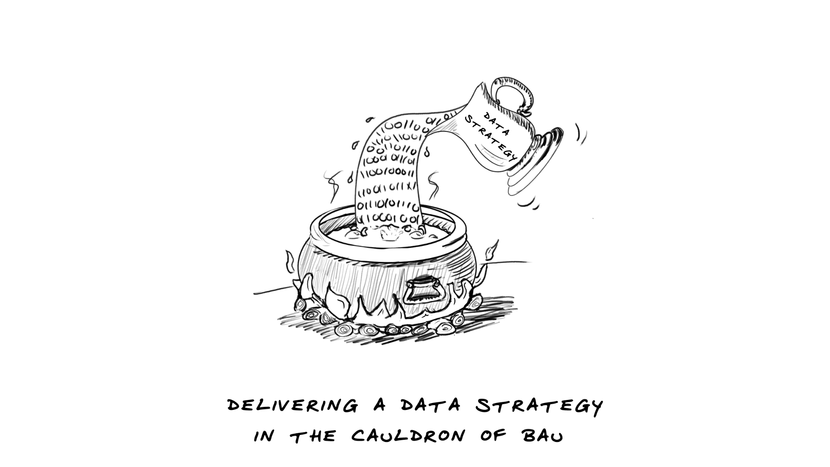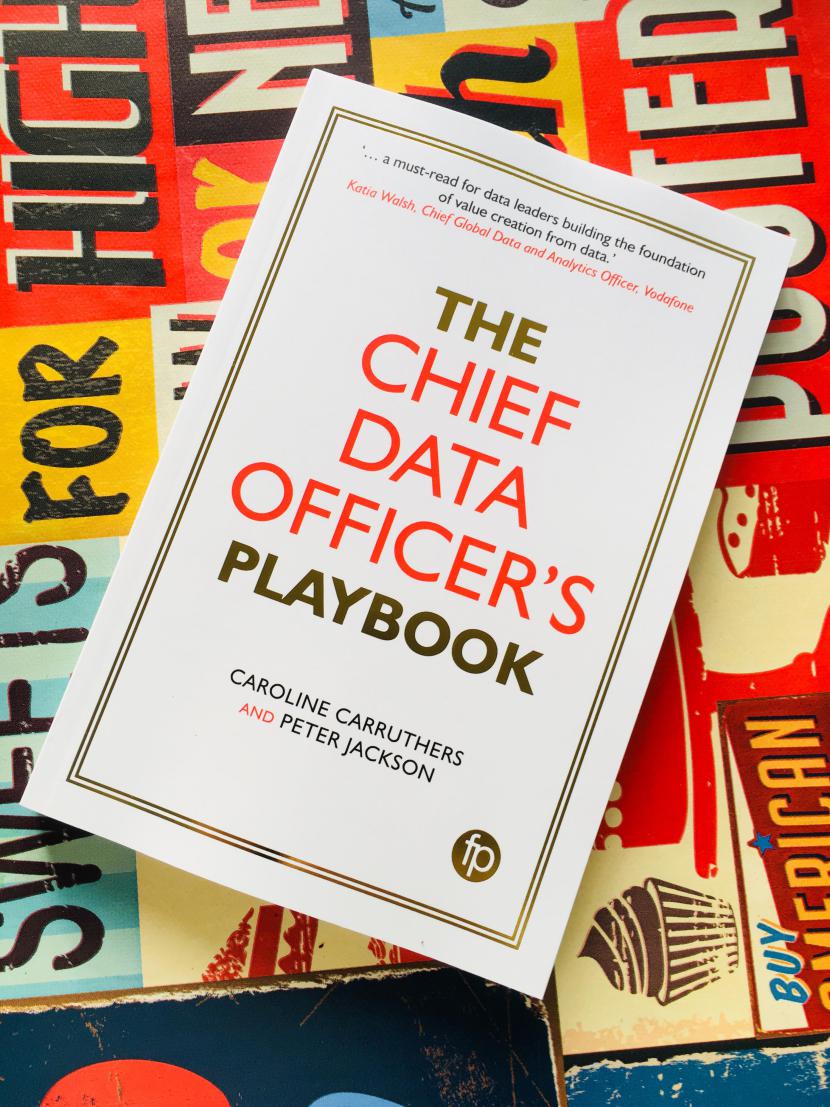Delivering a Data Strategy in the Cauldron of Business As Usual
Guest blog by the co-authors of The Chief Data Officer's Playbook, Caroline Carruthers (Group Director of Data Management, Lowell Group) and Peter Jackson (Chief Data Officer, Southern Water).
 Being a Chief Data Officer in the current climate is a rather interesting place to be, it can feel a little like dancing on quicksand while you have to learn to juggle wriggling snakes. So in order to help people interested in this area, whether you are a new CDO, well established data hero or just wondering what all the fuss is about, we have worked on a set of articles to answer some of the questions we are asked at nearly every conference we go to. While we can't promise you a solution to all your data related problems handed to you on a plate, we can promise that once a week you can look forward to another concise, interesting and easy to read article to help you on your data and information related journey.
Being a Chief Data Officer in the current climate is a rather interesting place to be, it can feel a little like dancing on quicksand while you have to learn to juggle wriggling snakes. So in order to help people interested in this area, whether you are a new CDO, well established data hero or just wondering what all the fuss is about, we have worked on a set of articles to answer some of the questions we are asked at nearly every conference we go to. While we can't promise you a solution to all your data related problems handed to you on a plate, we can promise that once a week you can look forward to another concise, interesting and easy to read article to help you on your data and information related journey.
One of the most difficult tasks for the new CDO is developing a Data Strategy while the organi\zation continues to operate (and must continue to operate) using and abusing data, continuing with bad habits around data and often with a lack of governance and planning. This has been likened to performing open heart surgery on a runner while they are in the middle of a marathon, in reality it's more like patching them up, giving them water to keep them going and a clear map to get them to the end of the race. In most situations for a new CDO the organisation probably feels that it has been operating quite happily without this new person for a very long while. So, for the new CDO it may feel like they are sitting in the corner talking to themselves. Alternatively the CDO may be met with comments like 'Yes, we tried that before and it didn't work' or ' IT/ Finance/ Procurement/ Marketing (delete as appropriate) won't like you doing that' or my personal favourite 'that's not how we do that here'.
What is the context of Business As Usual? In most cases (unless the organisation is a start-up) it will be:
- a legacy data environment: siloes of data, multiple records, 'duplicates', weak data governance, no useful meta data, heavy MI and no BI.
- legacy systems: burning platforms, bespoke developments, hard to maintain and manage, reporting systems remote from end-users, no true data management systems
- legacy business processes: evolved over time, limited by technology and data available at the point in time, containing many work-arounds
- multiple suppliers: of software and systems
- legacy IT department: focused on building stuff rather than delivering and supporting software-as-a-service, internal networks as opposed to cloud
- legacy 'transformation' process: based on project governance and waterfall, struggling with agile and innovation. Not able to adapt to transformation being data driven rather than technology driven
The task for the new CDO is how to steer their way through this bubbling cauldron and deliver a data strategy. One approach is to break the task down into two parts: an Immediate Data Strategy (IDS), a tactical approach to deliver support for BAU, gain quick wins and temporary fixes and to prepare the way for the second part. The additional benefit of the IDS is the delivery of incremental value to the organisation through its data, avoiding the hypecycle on the way (the next article deals with this in more detail). The second part is the Target Data Strategy (TDS), the strategic approach. The new CDO cannot sit back and deliver the TDS over a two to three year window, the organisation will probably be expecting some results now, so it is just as important to set realistic expectations as it is to provide some tactical delivery through the IDS. One piece of advice, don't call these tactical deliveries 'Projects' instead refer to them as 'Initiatives', this might engender a more agile approach.
The IDS should listen to the organisation's data pain and try to deliver high profile quick wins. The tactical initiatives of the IDS should blend into the strategy of the TDS, and not run down a rabbit hole or blind alley. The IDS should help build up the narrative and vision of the TDS.
 The six key elements of the IDS could be:
The six key elements of the IDS could be:
- Stability and rationalisation of the existing data environment
- Data culture and governance
- Existing and immediate data and IT development projects
- Data exploitation and integration
- Data performance, quality, integrity, assurance and provenance
- Data security (especially with GDPR in mind).
While the new CDO is delivering the IDS they should be pushing the TDS through business engagement, the organisation needs to be prepared, ready and believe in the changes that are coming. The CDO should also be using the IDS to show the 'art of the possible' to a data illiterate business to help the business engage with the new data possibilities. Through the IDS they should be running Proof of Concepts, feasibility studies, data science initiatives and building a narrative around the vision of the TDS for all levels of the business.
Finally, six tips on how to succeed using the IDS and TDS approach:
- Use internal communications to sell the vision, don't allow a vacuum to form
- Seek every opportunity to communicate the vision. Do not be frightened of becoming a data bore.
- Socialise the data visons and the changes that could be coming, especially the controversial ideas, locate the data champions to support you
- Engage the organisation's leadership and find your senior sponsors, they will be crucial
- If you can't explain it, you're doing something wrong, 'it's me not you'
- Win hearts and minds, often a good argument is not enough to win the day.
The book is available to purchase now. This post first appeared in a somewhat different form on the Facet Publishing blog.
